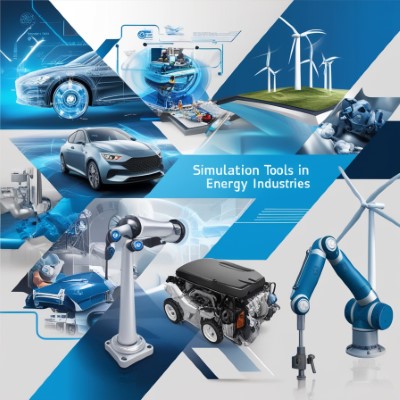The growth of simulation and analysis in the industry has been significant, driven by advancements in technology and the increasing complexity of products and systems. Several factors contribute to this growth:
Factors Driving Growth
- Advancements in Computing Power: The continuous improvement in computing power, including the availability of high-performance computing (HPC) and cloud-based solutions, allows for more complex and detailed simulations in shorter times.
- Increased Complexity of Products: Modern products, especially in industries like automotive, aerospace, and electronics, are becoming more complex. Simulation and analysis help in understanding and optimizing these products without the need for extensive physical prototyping.
- Cost Reduction: Simulation reduces the need for physical prototypes and experiments, leading to significant cost savings in product development and testing.
- Time-to-Market: By using simulation, companies can quickly iterate on designs, leading to faster development cycles and reduced time-to-market for new products.
- Regulatory Compliance: Many industries are subject to strict regulations that require extensive testing and validation. Simulation provides a way to meet these requirements efficiently.
- Innovation and Customization: Simulation tools enable more innovation by allowing designers to explore a wider range of design alternatives. They also support customization to meet specific customer requirements.

Industry-Specific Trends
Automotive
- The automotive industry is increasingly using simulation for developing electric vehicles (EVs), autonomous driving systems, and advanced driver-assistance systems (ADAS). This includes simulations of vehicle dynamics, battery performance, and sensor integration.
Aerospace
- Aerospace companies use simulation for everything from aerodynamics and structural analysis to thermal management and system integration. The need for lightweight materials and fuel efficiency drives the adoption of advanced simulation tools.
Electronics
- In the electronics industry, simulation is crucial for designing and verifying integrated circuits (ICs), printed circuit boards (PCBs), and electromagnetic compatibility (EMC). The rise of IoT and wearable devices further increases the demand for simulation.
Energy
- The energy sector uses simulation for optimizing power generation and distribution, including renewable energy sources like wind and solar. Grid stability and smart grid technologies also rely heavily on simulation.
Healthcare
- Simulation in healthcare includes the development of medical devices, drug discovery, and treatment planning. Biomechanical simulations and virtual surgeries are becoming more common.
Market Growth and Projections
The market for simulation and analysis software is expected to continue growing at a healthy rate. According to various market research reports, the global simulation software market is projected to grow at a compound annual growth rate (CAGR) of around 13-15% over the next few years. Factors contributing to this growth include:
- Digital Twin Technology: The adoption of digital twin technology, which involves creating digital replicas of physical assets, is driving demand for simulation software.
- Industry 4.0 and IoT: The integration of IoT with manufacturing processes and the adoption of Industry 4.0 principles are boosting the need for simulation to optimize operations and predict maintenance needs.
- Artificial Intelligence and Machine Learning: The incorporation of AI and ML into simulation tools is enhancing their predictive capabilities and automating complex analysis tasks.

Future Outlook
The future of simulation and analysis in the industry looks promising with continued advancements in technology and increasing adoption across various sectors. Key trends to watch include:
- Cloud-Based Simulation: More companies are adopting cloud-based simulation solutions for their scalability and cost-effectiveness.
- Integration with PLM Systems: Simulation tools are increasingly being integrated with Product Lifecycle Management (PLM) systems for better data management and collaboration.
- Real-Time Simulation: Advances in real-time simulation and virtual reality (VR) are enabling more immersive and interactive design and analysis experiences.
Overall, the growth of simulation and analysis in the industry is driven by the need for innovation, efficiency, and competitiveness in a rapidly evolving technological landscape.
